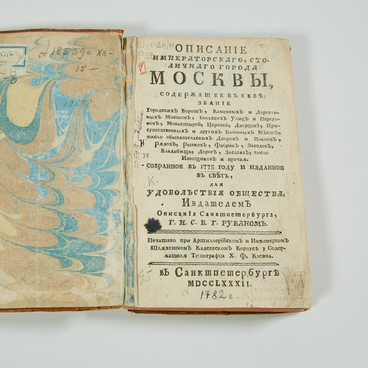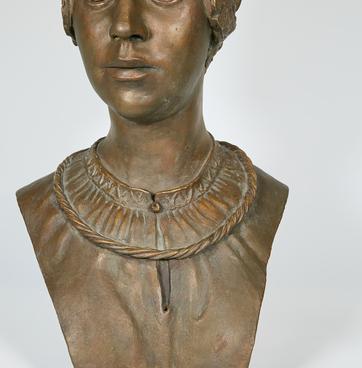The tombstone of the oprichnik Caspar von Elverfeldt is one of the crown jewels of the permanent exhibition at the Museum of Moscow.
The tombstone was discovered in 1989 in Moscow’s Shabolovka district, on the site of the oldest non-Orthodox cemetery outside the city, not far from the first foreigners’ settlement in Nalivki. The slab is decorated with a triangular pattern, traditional for Moscow tombstones of that time. This is the only medieval Moscow tombstone known today that bears a portrait of the buried: at the bottom of the slab, under the inscription, there is a profile of a man with a long nose and a prominent chin. On his head is a high cap, reminiscent of the military service of the German oprichnik.
The tombstone was that of an honorable German lawyer who was taken prisoner by the Russian army during the Livonian War and eventually became an oprichnik, a confidant and advisor to Ivan the Terrible. Elverfeldt’s name is repeatedly mentioned in the written sources of the 16th century. He knew the merchants of the Old English Court in Moscow, and even kept his property in the cellars of the house on Varvarka Street during the years of oprichnina. The personality of the German oprichnik Caspar von Elverfeldt is well known to researchers of the Grozny era. He soon won the Tsar’s attention and trust, and became his adviser on matters of Livonian policy, as well as diplomatic and religious matters. By 1570 Elverfeldt fell into disgrace, and perhaps tried to flee, but, having been imprisoned, died of the plague in 1571.
Contemporaries of Elverfeldt left contradictory remarks as to his character. One of them calls him an “apostate” and “the worst enemy of the Germans, ” who “gave the Grand Duke many plans against Livonia.” Another, Livonian prisoner Elart Kruse, describes him as a “highly respected, learned, noble and honest” lawyer. The German oprichnik Heinrich Staden described Caspar as an arrogant, “self-important and pursy gentleman.”
In Moscow, Elverfeldt probably lived in the city center, not far from the Oprichny Yard. It is known that the crypt was constructed during his lifetime It is possible that at that same time he commissioned the tombstone, which was found by archaeologists.


